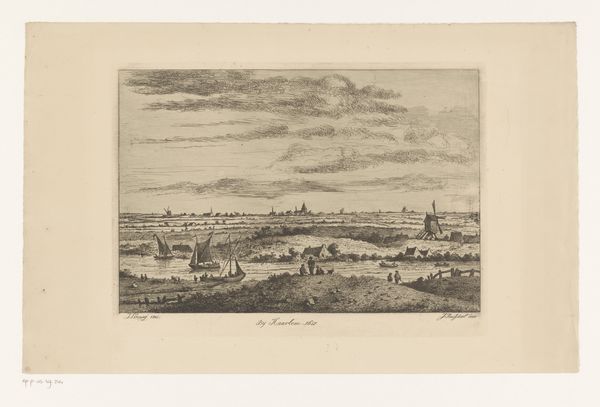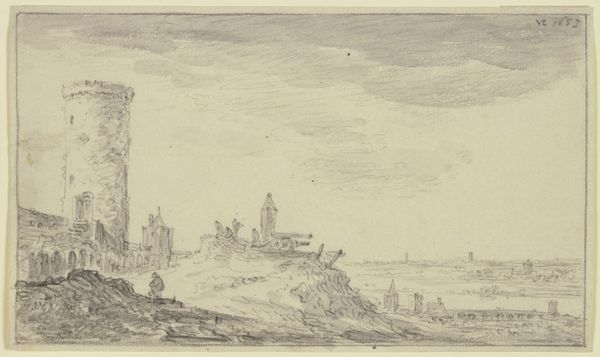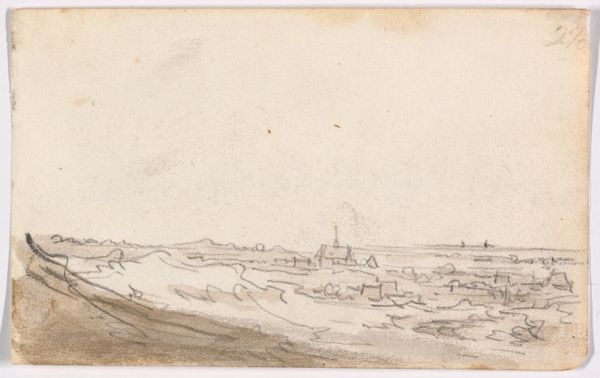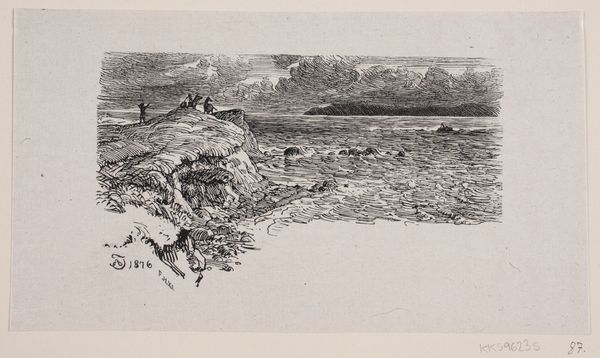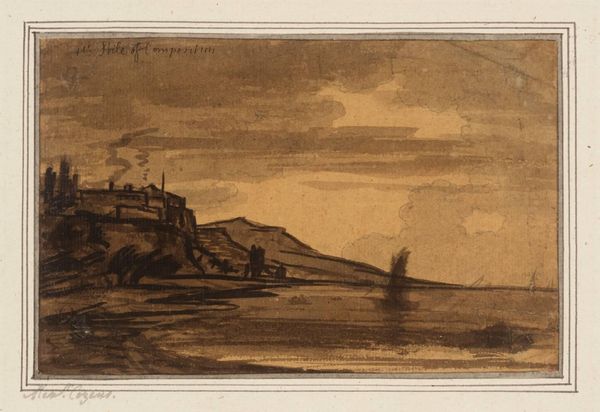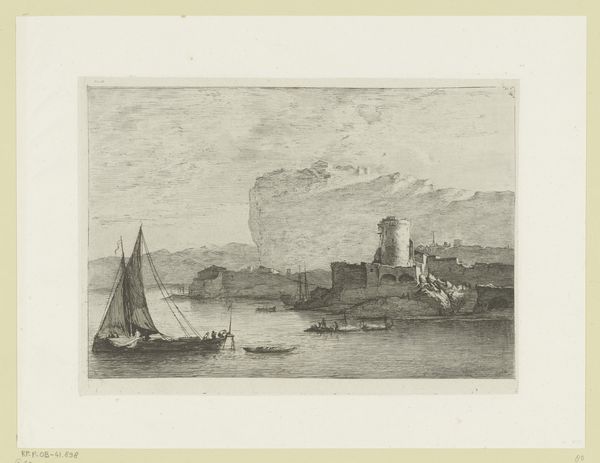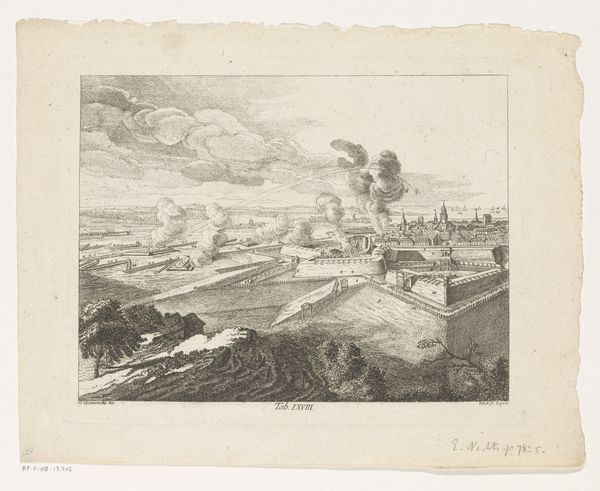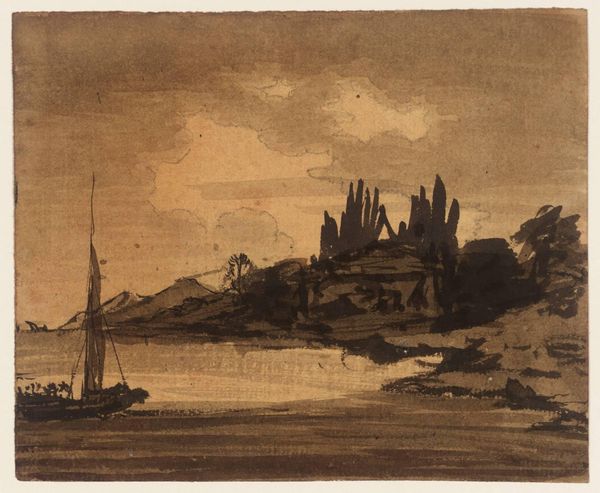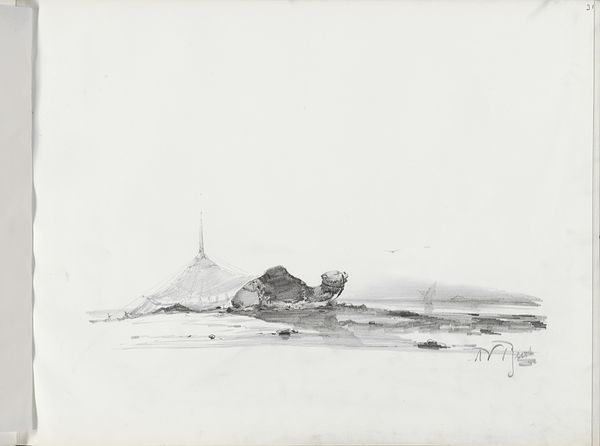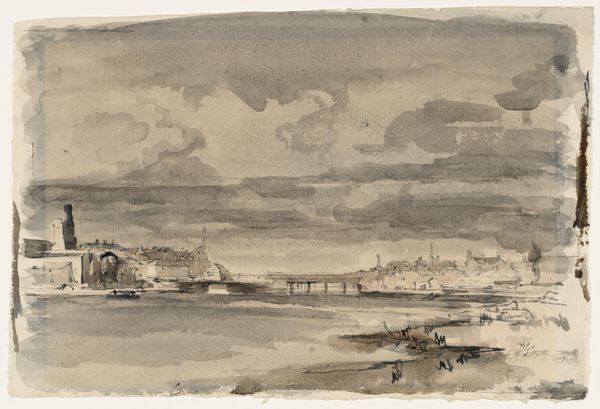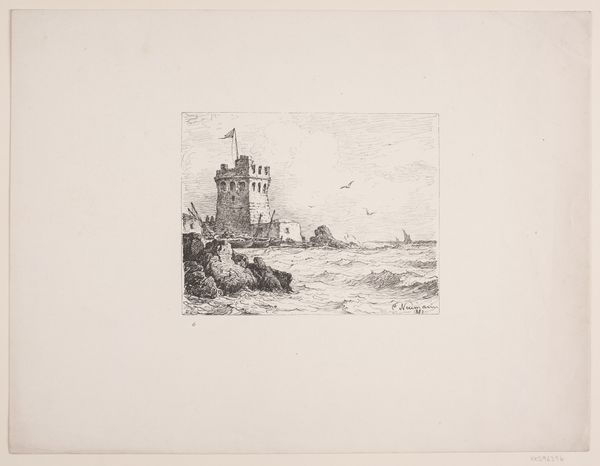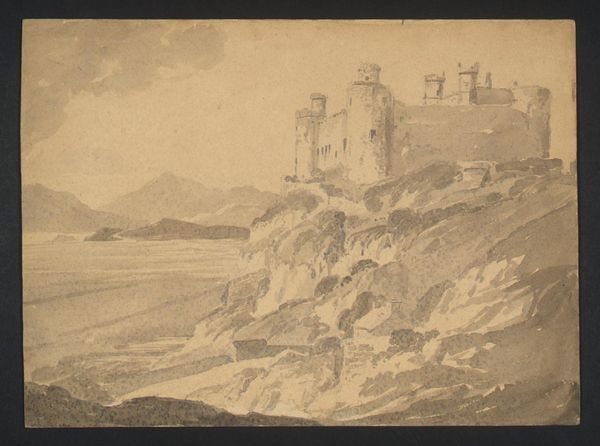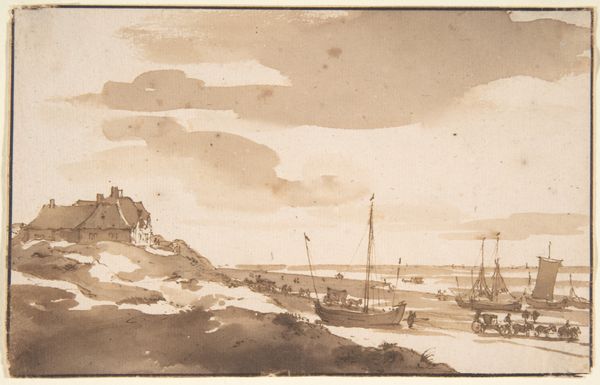
Dunstanborough Castle, plate 14 from Liber Studiorum Possibly 1808
0:00
0:00
drawing, print, etching, paper, engraving
#
drawing
# print
#
etching
#
landscape
#
charcoal drawing
#
paper
#
romanticism
#
history-painting
#
charcoal
#
engraving
Dimensions: 181 × 266 mm (image); 208 × 291 mm (plate); 266 × 380 mm (sheet)
Copyright: Public Domain
Editor: This is "Dunstanborough Castle, plate 14 from Liber Studiorum," an etching and engraving by J.M.W. Turner, dating back to possibly 1808. The monochromatic rendering, in earthy sepia tones, gives the print a timeless feel. How do you interpret this work? Curator: I see here the workings of capitalism, not simply a romantic ruin. Consider the “Liber Studiorum” itself - a commercial print venture by Turner aiming to democratize landscape art, and therefore its consumption. Etching and engraving, both reproducible techniques, put these scenes into more hands at lower prices than original paintings ever could. Editor: That's an interesting point about democratizing art through prints. So you're suggesting we shift away from the romanticized view and towards a focus on production and consumption? Curator: Precisely! Look at the level of detail achievable through etching – the textures of the stone, the waves, even the way the light catches. This level of refinement suggests skilled labor, a workforce dedicated to producing these images. And who would buy such a print? Perhaps a burgeoning middle class keen on decorating their homes, eager to consume representations of Britain's past. Editor: It’s easy to overlook the socio-economic forces behind even a seemingly picturesque landscape. Is there anything else within the image pointing to production and labor? Curator: Yes, those seemingly picturesque cottages nestled by the shore! They likely represent a fishing community. Note how they are situated *below* the imposing castle ruins. We might think about them representing a kind of hierarchy related to labor, with those working on the sea below those whose labor once contributed to maintaining a fortress above. Editor: This definitely gives me a new way to consider landscape art. I learned a lot. Thank you! Curator: My pleasure. It's always worthwhile examining the hands, and the historical forces, that shape our perception of beauty.
Comments
No comments
Be the first to comment and join the conversation on the ultimate creative platform.
